- Luật
- Hỏi đáp
- Văn bản pháp luật
- Luật Giao Thông Đường Bộ
- Luật Hôn Nhân gia đình
- Luật Hành Chính,khiếu nại tố cáo
- Luật xây dựng
- Luật đất đai,bất động sản
- Luật lao động
- Luật kinh doanh đầu tư
- Luật thương mại
- Luật thuế
- Luật thi hành án
- Luật tố tụng dân sự
- Luật dân sự
- Luật thừa kế
- Luật hình sự
- Văn bản toà án Nghị quyết,án lệ
- Luật chứng khoán
- Video
- NGHIÊN CỨU PHÁP LUẬT
- ĐẦU TƯ CHỨNG KHOÁN
- BIẾN ĐỔI KHÍ HẬU
- Bình luận khoa học hình sự
- Dịch vụ pháp lý
- Tin tức và sự kiện
- Thư giãn

TIN TỨC
fanpage
Thống kê truy cập
- Online: 223
- Hôm nay: 198
- Tháng: 1621
- Tổng truy cập: 5245625
2034-2044
Ectogenesis is transforming reproductive rights
Ectogenesis – the growth of mammalian embryos in artificial environments – was first described in 1924 by British scientist J.B.S. Haldane. His essay, Daedalus; or, Science and the Future, was regarded as shocking science fiction at the time, but later proved to be remarkable in having predicted many scientific advances. Haldane was a friend of author Aldous Huxley, whose famous novel Brave New World (1932) anticipated similar developments in reproductive technology.
In 1953, a transient biochemical pregnancy was reported by Australian researchers who extracted an intact fertilised egg. It was followed by in vitrofertilisation (IVF) six years later enabling the birth of a live rabbit. The first human pregnancy through IVF occurred in 1973 – though it only lasted for a few days. A major milestone was finally reached in 1978, when Louise Brown became the first "test tube baby" having been conceived on a petri dish.
During the 1980s, IVF was condemned as immoral by religious groups, but public opinion shifted in favour of these procedures. The next few decades saw rapid development in the field. New drugs, better ovarian stimulation techniques, and improved ways to identify the best embryos, all helped in achieving higher success rates, while costs were lowered. The ability to freeze and subsequently thaw and transfer embryos also greatly improved the feasibility of IVF. By the dawn of the 21st century, it had become a mainstream medical technology. Half a million test tube babies had been born around the world by 2004 and this number increased ten-fold to reach five million by 2012.
Other developments in reproductive medicine included the first baby born to a mother with a womb transplant, reported in 2014.* Three-parent babies became possible in 2016. An even more ambitious and challenging goal lay ahead. It was almost a century since Haldane coined the term "ectogenesis" and replacing traditional pregnancies with fully artificial wombs had now become a real possibility. A number of hurdles remained – including ethical and legal considerations – but genuine progress was being made. One study introduced a mouse embryo into a lab-created uterine lining, resulting in successful implantation and growth on these engineered tissues – held on a bio-engineered, extra-uterine "scaffold." In another study, goat foetuses survived for ten days in a prototype artificial womb consisting of a machine with amniotic fluid in tanks. A third study achieved this with a human embryo, but regulations allowed only a 14-day timespan on research of this kind. These and other breakthroughs led to the first complete working animal wombs in the early 2020s.*
A further decade of pioneering work, alongside a relaxing of regulations, led to a human version in the early 2030s.** This first model demonstrated an ability to supply both oxygen and nutrients from an external source to nurture a foetus, as well as dispose of waste material. The feed incorporated an interface to function as a placenta. During clinical trials, it was made available to a small number of parents, but quickly became widespread in the decade after its introduction.*
With mainstream use having been achieved, rapid changes began to occur in society. Ectogenesis offered a new way of producing children without having to endure a lengthy, painful and potentially dangerous pregnancy cycle. Women no longer had the sole responsibility of childbirth and were free from worries about whether a certain lifestyle or environment (such as alcohol consumption) was harming the foetuses' development. Every aspect of the nine-month process could be monitored in perfect detail by the machines – ensuring a safe and efficient alternative to natural birth. For many women, their lifestyle and career prospects were transformed; a boon for gender equality. Those with damaged, diseased or removed uteri could also take advantage of the procedure. Homosexual couples and single men could also have children without having to use surrogate mothers. Yet another option now available was for pregnant women seeking an abortion to place their embryo in these artificial wombs, allowing somebody else to adopt it rather than killing off the foetus.
Many conservatives and religious groups remained opposed to this process, just as they had been for IVF – but the influence of religion was declining as the world continued to become more secular. Feminists were divided over this new definition of "motherhood" and its effect on their role in society. Meanwhile some expressed concerns that children born in this way could lack an essential bond with their mothers that other children had. However, these machines were able to use vocal recordings, movement, and other sensations to accurately simulate a natural gestation. Even greater advances would emerge in the 2050s with extensive manipulation of DNA in these wombs allowing "designer babies" for the rich.*
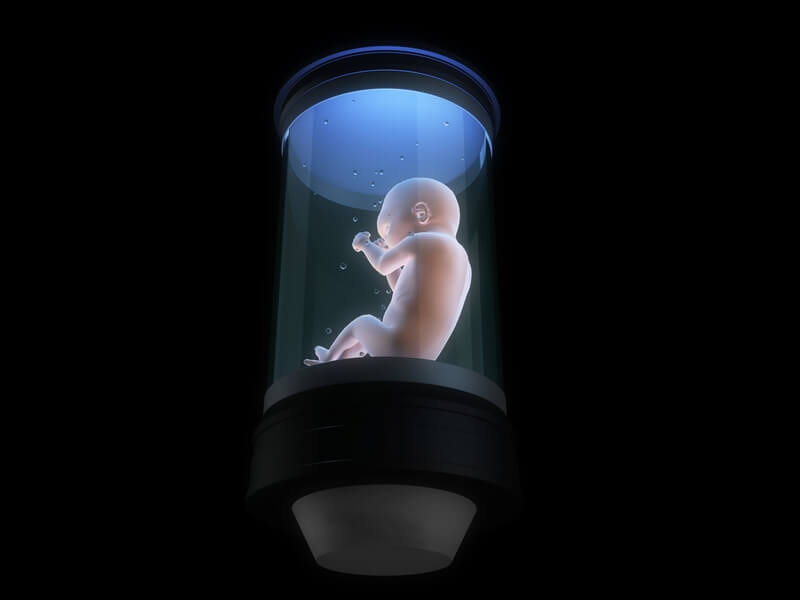
Ectogenesis: artificial womb technology | © Sebastian Kaulitzki | Dreamstime.com
2034
Service robots number a billion worldwide
By the mid-2030s, the number of service robots has reached one billion worldwide and continues to grow rapidly.* Service robots are generally divided into two separate groups: personal and professional. The former are used in non-commercial settings and usually by laypersons. Examples would include domestic units such as vacuum cleaners, lawn mowers, kitchen chefs, personal mobility assistants, toys and pet exercise robots. The latter group, professional service robots, tend to be used for commercial tasks and are normally operated or monitored by properly trained personnel. Examples can include medical robots performing surgical operations, fire-fighting robots, automated security patrols, machines to clean public places, delivery robots and others designed to assist with retail or leisure environments.
Both personal and professional service robots are separated from another category of machines: industrial robots. This third group is nowhere near as numerous or visible in everyday life, though still growing at a rapid rate during this time.*
The disruption caused by AI, automation and robotisation has accelerated in recent years,* creating a backlash among the general public. Some of the countries most affected include Germany, Italy, Japan, South Korea and Switzerland, where one-quarter of traditional work activities have been displaced.* While some employees are able to transfer into other industries, substantial numbers are unable to do so. This is leading to calls for increased support and intervention by both governments and businesses, such as providing retraining and education for those affected. More radical initiatives, such as universal basic incomes (UBI), have also seen increased public support, with an ever-growing number of countries and regions willing to experiment with the idea.
One of the sectors under most pressure in 2034 is retail, with machines having recently surpassed humans in the majority of tasks.* Shop robots are now a common sight in large grocery, hardware and other stores, where they roam the aisles and restock or rearrange items, perform security functions and handle tasks such as cleaning floors. Unlike the "dumb" machines of earlier generations, robots of the 2030s are considerably smarter – highly adaptable to their surroundings and work situations, able to instantly recognise and interact with countless objects, while providing real-time information to customers. This has come about through exponential improvements in machine learning, cloud computing, bandwidth, sensor technology and so on.
The sparse numbers of human staff – especially when combined with cashier-less payment systems* – can be a rather dehumanising and impersonal experience compared to traditional stores of the past. Senior citizens find it hard to accept the changes.* However, the drive towards ever greater efficiency and productivity has made this trend unstoppable, with more and more businesses employing the use of robots. In some nations, such as Japan, China, South Korea and Taiwan, they are becoming a vital necessity due to aging populations and shrinking workforces.*
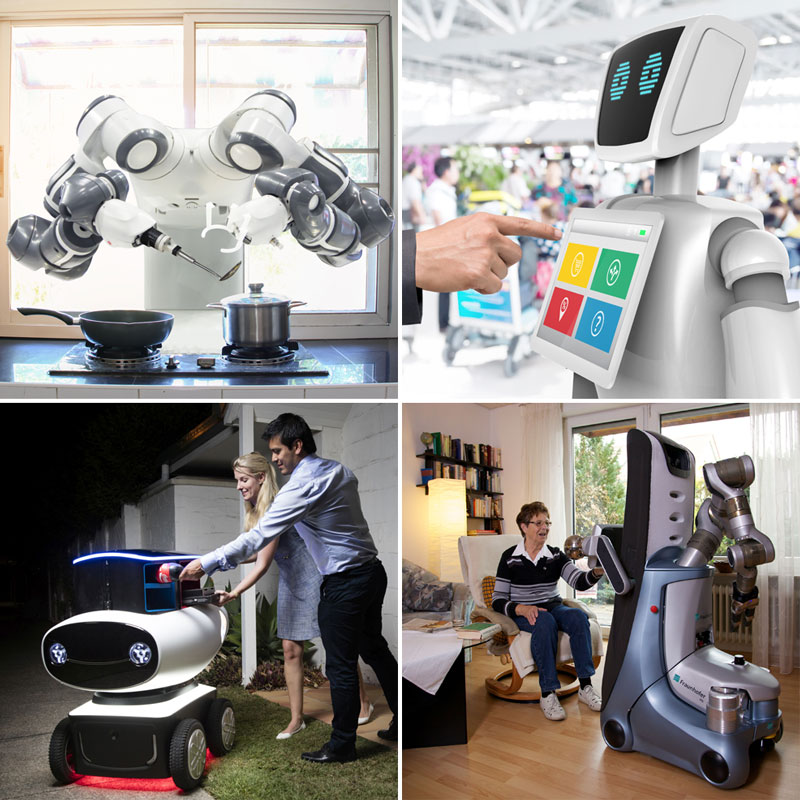
Image credits: Domino's Pizza / Kniff Projektagentur GbR / Fraunhofer IPA
The Laser Interferometer Space Antenna (LISA) is launched
The Laser Interferometer Space Antenna (LISA) is a gravitational wave observatory launched by the European Space Agency.** This project is the third of three L-class (Large) missions in the "Cosmic Vision" programme which includes two other spacecraft – the Jupiter Icy Moon Explorer (JUICE) launched in 2022* and the Advanced Telescope for High ENergy Astrophysics (ATHENA) deployed in 2028.*
LISA is designed to sense gravitational waves – tiny ripples in the fabric of space-time – with extreme precision. Three spacecraft are placed in a triangular formation with 2.5 million kilometre sides, flying along an Earth-like heliocentric orbit. Laser interferometry is used to monitor fluctuations in the relative distances between them, with a resolution of just 20 picometres (20 trillionths of a metre, or smaller than a helium atom).*
To eliminate non-gravitational forces such as light pressure and solar wind on the test masses, each spacecraft is constructed as a zero-drag satellite and effectively "floats" around the masses, using capacitive sensing to determine their relative position, with ultra-precise thrusters to remain properly centred at all times.
Previous searches for gravitational waves in space were conducted for short periods by planetary missions with other primary objectives (such as Cassini–Huygens), using microwave Doppler tracking to monitor fluctuations in the Earth-spacecraft distance. By contrast, LISA is a dedicated mission using laser interferometry to achieve a much higher sensitivity. Other antennas had been operational on Earth, but their sensitivity at low frequencies was limited by the largest practical arm lengths, seismic noise, and interference from nearby moving masses.
Passing gravitational waves alternately squeeze and stretch objects by a tiny amount. These waves are caused by energetic events in the Universe, such as massive black holes merging at the centre of galaxies; black holes consuming small compact objects like neutron stars and white dwarfs; supernova star explosions; remnants from the very early phase of the Big Bang and possibly theoretical objects like cosmic strings and domain boundaries.
Since LISA is the first dedicated, space-based gravitational wave detector, the mission adds a whole new sense to our perception of the Universe – enabling astronomers to "hear" events in ways not possible before and revealing many important phenomena that were previously invisible.

Australia has fully decarbonised its electricity supply
By 2034, virtually all of Australia's electricity is supplied from renewable energy sources, such as solar, wind, biomass and hydro-power.* For many years, Australia had struggled to break its addiction to fossil fuels. The coal industry, in particular, held enormous sway over the political system. PM Tony Abbott, describing coal as "good for humanity", insisted it would be the "world's main energy source for decades to come." He was followed by Malcolm Turnbull who, although promising to take climate change seriously, did little to alter the status quo. Turnbull was succeeded in 2018 by Scott Morrison, a fanatical lover of coal, who had once mocked the opposition by bringing a lump of coal into the debating chamber.*
Coal production in Australia increased substantially at the dawn of the 21st century – growing by 80% between 2000 and 2015. Australia was the biggest net exporter of coal in the mid-2010s, accounting for 32% of global exports (389 Mt out of 1,213 Mt total) and employing 50,000 people. The enormous Carmichael coal mine was proposed in the northeast of the country, a megaproject that was expected to produce 2.3 billion tonnes of coal over 60 years. This drew immense controversy about its claimed economic benefits, financial viability, plans for government subsidy and damaging environmental impacts. Alongside its potential harm to the nearby Great Barrier Reef (through dumping of dredge spoil), concerns were raised about groundwater pollution and the clearance of threatened species at the site, including koalas. Furthermore, the vast amount of carbon emissions, from this single mine alone, would be around 0.5% of the worldwide carbon budget limit for avoiding 2°C of warming. Nevertheless, the project continued to move forward, receiving billions of dollars in government assistance.
Carmichael was just the first of a number of large mines proposed for the Galilee Basin and was intended to facilitate their development too. Australia had experienced record growth in coal exports, with its largest importers being Japan (34%), China (24%), South Korea (15%) and India (14%). Much of the remaining glut of coal was consumed domestically, accounting for nearly 50% of Australia's electricity supply in 2015. The country was among the highest of the developed nations in terms of carbon footprint per capita.
However, the world was changing fast; in particular, with regards to energy production. Australia was not immune to the revolution now underway and faced losing billions of dollars in stranded assets. Early warning signs had provided a glimpse of what was to come – such as the auctions held in India, during which solar-generated electricity became cheaper than coal.* This had followed earlier reports that international coal projects relying on new import markets faced major financial risks.* Even when the costs of storage (to make intermittent power sources reliable) were added, renewable energy was becoming Australia's cheapest energy option.*
These changes had become more and more obvious in the late 2010s and continued into the 2020s. Between 2018 and 2019 the nation installed over 10,400MW of new renewable energy, helped by Australia's superb geographical placement and high level of solar irradiance. The accelerating trends in solar and wind power were accompanied by a corresponding decline in coal production, as mines and power stations proved to be economically unviable, either shutting down or being mothballed indefinitely. Renewables were even beginning to match the wholesale price of gas in Australia, meaning that solar-generated electricity could directly compete for provision of industrial heat.
By 2025, renewables had overtaken fossil fuels when measured by terawatt-hours (TWh) and were supplying 50% of Australia's electricity. The large-scale exposure of investors to stranded assets was producing a "carbon bubble" with major economic repercussions – particularly for Australia, but also many other countries around the world. As the plunging value of fossil fuels became apparent, the bursting of this bubble created one of the largest economic crises of the first half of the 21st century.* This setback was only temporary, however, as the world transitioned to a clean energy future. By 2034, renewables are supplying essentially all of Australia's electricity.*
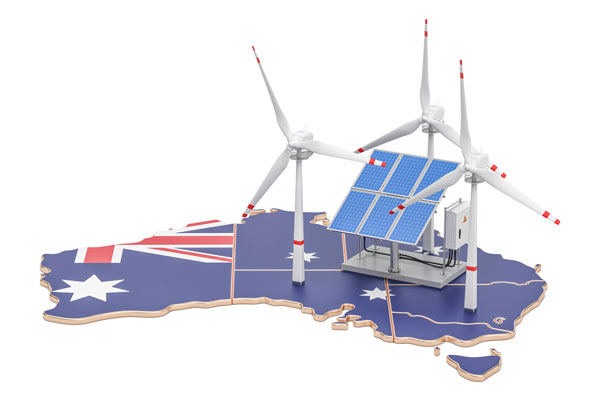
Switzerland phases out nuclear energy
After the Fukushima disaster in Japan, questions were raised about the long-term viability of nuclear power. Switzerland was among the nations to abandon this form of energy production, following public protests and a government review. The country’s five existing reactors – supplying about 40% of the country's power – were allowed to continue operating, but were not replaced at the end of their life span. The last plant is taken offline in 2034.*
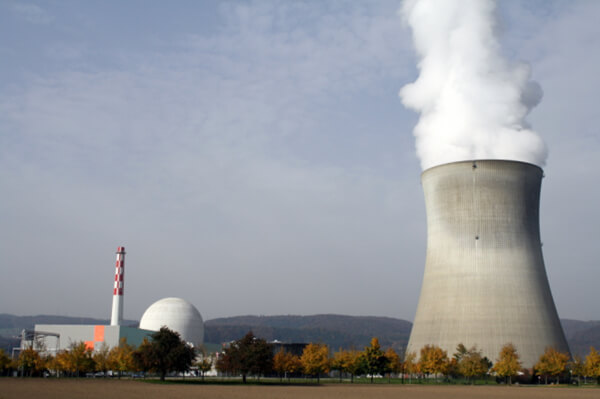
A nuclear power station with a cooling tower in Leibstadt, Switzerland.
Caribbean coral reefs are in danger of being wiped out
Often called "rainforests of the sea", coral reefs form some of the most diverse ecosystems on Earth. Historically, they have occupied less than 0.1% of the world's ocean surface – about half the area of France – yet provided a home for 25% of all marine species. Delivering a range of ecosystem services to tourism, fisheries and shoreline protection, the global economic value of coral reefs at one time was estimated at up to $375 billion each year.*
However, coral reefs are fragile ecosystems, partly because they are so sensitive to water temperature. In the early 21st century, they were under threat from climate change, oceanic acidification, blast fishing, cyanide fishing for aquarium fish, sunscreen use, overuse of reef resources, and harmful land-use practices; including urban and agricultural runoff and water pollution, harming reefs by encouraging excess algal growth.
The Caribbean – home to 9% of the world’s coral – saw a 50% decline between 1970 and 2012, leaving just one-sixth of the pre-industrial reef cover. According to a detailed analysis in 2014, virtually all of the remaining Caribbean coral reefs would disappear within 20 years, based on current trends.*Climate change had once been seen as the main culprit, lowering the pH level and causing bleaching. While ocean acidification was still a serious threat, new data suggested that a loss of parrotfish and sea urchin – the area’s two main grazers – was, in fact, the biggest driver of coral decline in this particular region.
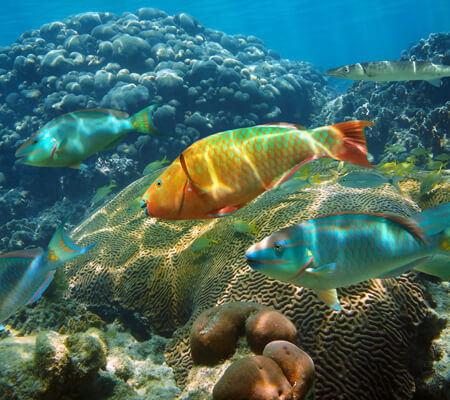
For example, an order-of-magnitude increase in bulk shipping during the 1960s-70s introduced pathogens and invasive species near the Panama Canal that later spread to the Caribbean. An unidentified disease led to a mass mortality of the sea urchin in the 1980s, while extreme overfishing brought parrotfish to the brink of extinction in some regions. Loss of these species broke the delicate balance of coral ecosystems and enabled algae – on which they fed – to smother the reefs. Areas protected from overfishing, as well as other threats such as pollution, tourist activity and coastal development, were more resilient to pressures from climate change.
Some of the healthiest coral reefs, with high populations of grazing parrotfish, included the Flower Garden Banks National Marine Sanctuary in the northern Gulf of Mexico, Bermuda and Bonaire, all of which banned or restricted fishing practices that harmed the fish. Reefs where the parrotfish were not protected suffered tragic declines – such as Jamaica, the entire Florida Reef Tract from Miami to Key West, and the U.S. Virgin Islands.
Attempts were made in subsequent decades to protect these species across a wider area, and restore the balance between algae and coral using better management strategies. Although some of these efforts achieved modest success, short-term economic pressures and business interests tended to outweigh these concerns. The region as a whole remained under serious threat, and by 2034, Caribbean coral reefs have edged further towards complete collapse.*
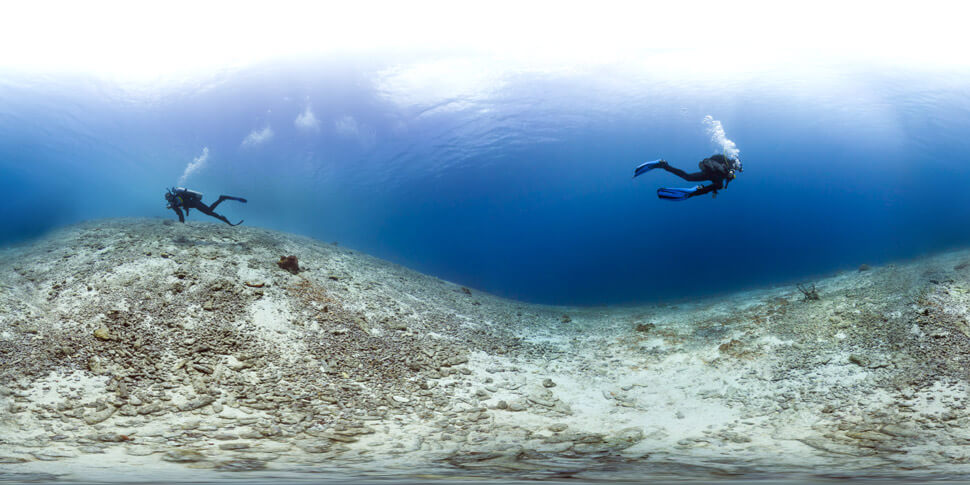
Coral reef dead zones in the Caribbean. Credit: Catlin Seaview Survey
Coastal erosion has destroyed hundreds of UK homes
Rising sea levels and increased storm intensity have begun to seriously affect the British coastline. By the mid-2030s, more than 800 homes have been lost due to erosion. While mitigation efforts have been stepped up around the country as a whole, these particular homes were deemed too expensive to save, resulting in their occupants being forced to abandon them and settle elsewhere, with little or no government compensation. During especially stormy years, up to 7 metres (23 ft) of land is being eaten away per year in some places* – the highest rate in Europe. The most at-risk areas include Devon, Cornwall, the Isle of Wight, Yorkshire and East Anglia. As well as buildings, the shrinking coastline has affected farmland, nature reserves and nuclear power plants, along with a nationwide public footway established in the previous decade.* Towards the end of this century, the number of homes being lost will increase more than eight-fold to 7,000. If no action were taken, the figure would grow 90 times higher, from 800 to 74,000.*

A major supermoon occurs
A so-called "supermoon" occurs when a full moon coincides with a lunar perigee – the closest approach of the Moon in its elliptical orbit around Earth. Such events produce the largest apparent size of the lunar disk as seen from Earth, making it appear 15% larger and 30% brighter than during apogee (its most distant point from Earth). This provides great opportunities for astronomers and photographers. Particularly dramatic supermoons occur when a full moon and lunar perigee also happen when Earth is at perihelion (its closest point to the Sun for the year).
On the morning of 14th November 2016, the distance between the centre of the Moon and Earth was 221,524 miles (356,509 km), the closest they had been together during a full moon since 1948. The Moon would not appear this large again until 25th November 2034. The closest supermoon of the century occurs on 6th December 2052. Notable supermoons are also observed in 2070, 2088 and 2098.*
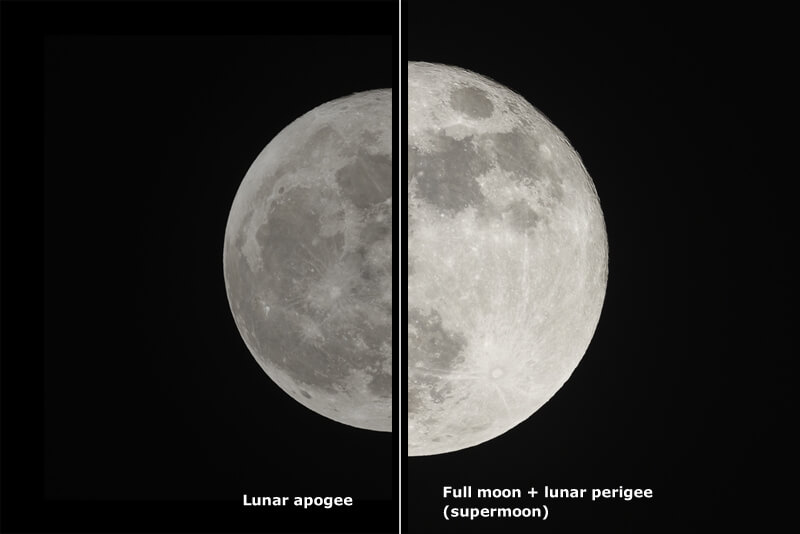
By www.futuretimeline.net
Các bài viết khác
- Pepper harvesting robot could enter commercial use within five years (05.10.2018)
- Satellite company will partner with Amazon to deliver Internet of Things (IoT) network (05.10.2018)
- US, Japan, Europe Agree to Take on China and Reform WTO (05.10.2018)
- THẾ KỶ Ô NHỤC" CỦA TRUNG QUỐC - ôn cố tri tân. (05.10.2018)
- Việt Nam đứng nhất thế giới về tốc độ tăng trưởng nhóm người có tài sản ròng cực cao (05.10.2018)























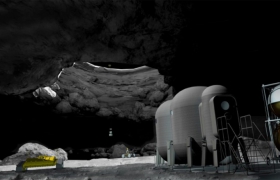
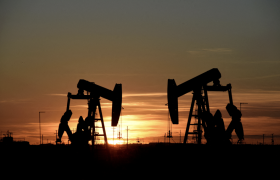
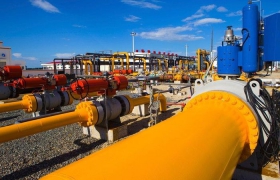








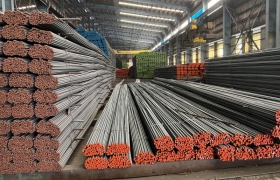















 Yahoo:
Yahoo: 